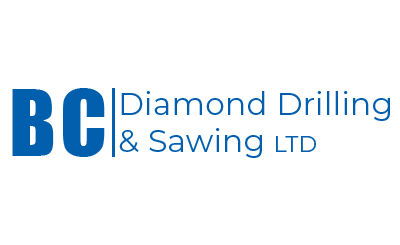When it comes to constructing large-scale transportation projects, precision and efficiency are key. The New Elizabeth Line is no exception. As the latest addition to London’s underground network, the Elizabeth Line connects major hubs throughout the city, offering commuters faster and more accessible travel routes. One of the key methods used to construct this complex network of tunnels and stations? Diamond drilling. In this article, BC Diamond Drilling & Sawing Ltd, experts in Diamond Drilling London, will explore 7 ways diamond drilling was used to construct the Elizabeth Line, and how it helped make this ambitious project a reality.
Introduction to Diamond Drilling and the Elizabeth Line
Diamond drilling is an essential part of the construction industry, and it has revolutionised the way we build structures. It is a process that uses a rotary drill bit with industrial diamonds as the cutting tool. The diamonds create a highly abrasive cutting surface that can efficiently cut through a variety of materials, including concrete and metal.
The use of diamond drilling has become increasingly popular over the years due to its precision cutting abilities and its ability to cut through tough materials. Diamond drilling is used in many applications, including construction, mining, and oil and gas drilling.
The Elizabeth Line, also known as Crossrail, is a new railway line that will run through London, connecting Reading and Heathrow Airport in the west with Abbey Wood and Shenfield in the east. The project is one of the largest infrastructure projects in Europe, and diamond drilling played a significant role in its construction.
Throughout the construction of the Elizabeth Line, diamond drilling was used extensively in a variety of applications. One of the most notable applications was in tunnel excavation. Diamond drilling was used to create the tunnels that the trains will run through, allowing for precision cutting and a smooth finish.
Diamond drilling was also used in the construction of the station platforms. The platforms needed to be precise in size and shape to ensure that the trains could stop safely and efficiently. Diamond drilling was used to create the holes for the platform edge doors, which are an essential safety feature of the Elizabeth Line.
In addition to tunnel excavation and station platform construction, diamond drilling was also used in the construction of the ventilation shafts and emergency access points along the line. These structures needed to be precise in size and shape to ensure that they functioned correctly and provided safe access to the underground tunnels.
Overall, diamond drilling played a crucial role in the construction of the Elizabeth Line. Its precision cutting abilities and ability to cut through tough materials made it an invaluable tool in the construction process. As the Elizabeth Line prepares to open to the public, it is clear that diamond drilling has helped to create a world-class railway system that will benefit London for years to come.
The Benefits of Diamond Drilling in Construction Projects
Diamond drilling is a highly effective method of cutting through hard surfaces, offering several benefits over other cutting techniques. Let’s take a closer look at some of the advantages of diamond drilling:
Precision and Accuracy
One of the key advantages of diamond drilling is its ability to achieve highly precise cuts and openings. This is especially important in construction projects where accuracy is crucial, such as tunnel excavation or station platform construction. Diamond drilling eliminates the risk of material damage or imprecision that can result from other cutting techniques, ensuring that the final product is exactly as designed.
For example, when constructing a new station platform, it is important to ensure that the platform is level and the correct size to accommodate trains. Diamond drilling can be used to create precise openings for lighting fixtures, electrical conduits, and other features, ensuring that everything fits perfectly.
Reduced Noise and Vibration
Another benefit of diamond drilling is its ability to minimise noise and vibration during the cutting process. This is particularly important in urban construction projects such as the Elizabeth Line, where nearby residents and businesses may be sensitive to disruptive noise pollution. Diamond drilling cuts with minimal disturbance, reducing noise levels and minimising the impact on surrounding infrastructure.
For example, when cutting through a concrete wall in a residential area, diamond drilling can be used to minimise noise pollution and prevent damage to nearby buildings.
Versatility in Material and Application
Diamond drilling is also highly versatile in terms of the materials and applications it can accommodate. Whether cutting through concrete, metal or other hard surfaces, diamond drilling offers a highly effective and precise method of cutting. It can also be used in a variety of applications, from tunnel excavation to station platform construction to utility installation.
For example, diamond drilling can be used to create openings in a concrete wall for the installation of plumbing or electrical lines. It can also be used to create holes in metal surfaces for the installation of HVAC systems or other equipment.
In summary, diamond drilling offers several benefits over other cutting techniques, including precision and accuracy, reduced noise and vibration, and versatility in material and application. It is a highly effective method of cutting through hard surfaces, making it an essential tool in many construction projects.
Diamond Drilling for Tunnel Construction
When it comes to tunnel construction, precision is key. Any deviation from the intended tunnel profile can cause serious problems down the line. That’s why diamond drilling has become the go-to method for creating accurate tunnel profiles.
Creating Accurate Tunnel Profiles
Diamond drilling was crucial in the excavation of the Elizabeth Line tunnels. In this application, diamond drilling was used to create highly precise tunnel profiles, eliminating the risk of over or undercuts that can occur with other methods. This ensured that the tunnels were straight, level and met the necessary clearance requirements for train travel.
But how does diamond drilling achieve this level of precision? The answer lies in the cutting process. Diamond drill bits are coated in tiny diamonds, which are the hardest substance known to man. As the bit rotates, these diamonds grind away at the rock, creating a smooth and precise cut. This allows for incredibly accurate tunnel profiles, with minimal risk of deviation.
Efficient Excavation and Material Removal
But diamond drilling isn’t just precise – it’s also highly efficient. The cutting process allows for precise cuts, minimising the need for additional excavation or material removal. This not only reduced the overall time required for the excavation process but also minimised the amount of excess waste and debris left behind.
And because diamond drilling is so efficient, it’s also cost-effective. With less time and material required for excavation, the overall cost of the tunnel construction project can be significantly reduced.
But efficiency isn’t the only benefit of diamond drilling. The method is also relatively low-impact, with minimal noise and vibration compared to other excavation methods. This makes it an ideal choice for tunnel construction in urban areas, where minimising disruption to nearby residents and businesses is crucial.
In conclusion, diamond drilling is a highly precise and efficient method for tunnel excavation. Its ability to create accurate tunnel profiles and minimise waste and debris makes it a cost-effective choice for tunnel construction projects. And its low-impact nature makes it an ideal choice for urban areas where disruption must be minimised.
Station Platform and Concourse Construction
The construction of Elizabeth Line station platforms and concourses required a great deal of precision and expertise. To ensure that the stations were safe, efficient, and accessible, a variety of techniques were employed, including diamond drilling.
Cutting Precise Openings for Escalators and Lifts
One of the key uses of diamond drilling in the construction of Elizabeth Line stations was cutting precise openings for escalators and lifts. These openings had to be highly accurate and clean to accommodate the necessary equipment, and diamond drilling was the ideal method for achieving this. By using diamond-tipped drill bits, workers were able to make precise cuts without damaging surrounding materials or infrastructure. This was essential for ensuring that the stations were safe and functional for passengers.
But what exactly is diamond drilling? Essentially, it’s a technique that uses diamond-tipped drill bits to cut through hard materials like concrete, stone, and asphalt. The diamond-tipped bits are incredibly strong and durable, allowing them to cut through even the toughest materials with ease. This makes diamond drilling an ideal method for construction projects where precision and accuracy are essential.
Creating Ventilation and Service Shafts
In addition to cutting openings for escalators and lifts, diamond drilling was also used extensively in the construction of ventilation and service shafts within the Elizabeth Line stations. These shafts were necessary to provide ventilation and access for service personnel, but they could pose a risk to the structural integrity of the surrounding areas if not cut precisely.
Diamond drilling allowed for clean and efficient cuts, reducing the risk of damage to surrounding surfaces. This was especially important given the complexity of the construction project and the need to ensure that the stations were safe and secure for passengers.
Overall, diamond drilling was a crucial technique in the construction of Elizabeth Line station platforms and concourses. Allowing for precise and efficient cuts, it helped to ensure that the stations were safe, functional, and accessible for passengers. As the Elizabeth Line continues to expand and grow, diamond drilling will likely continue to play an important role in its construction and development.
Diamond Drilling for Track Installation
Ensuring Accurate Alignment and Stability
As the Elizabeth Line is a high-speed rail network, ensuring accurate alignment and stability of the tracks was crucial. Diamond drilling was used to create highly precise openings for track installation, ensuring that the tracks were level, properly aligned and met the necessary standards for stability and speed. This allowed for seamless train travel along the entire network.
Minimising Disruption to Surrounding Infrastructure
Diamond drilling was also highly effective in minimising disruption to surrounding infrastructure during track installation. Other cutting techniques can produce high levels of noise, dust and debris, which can pose a risk to nearby structures and residents. Diamond drilling produced minimal noise and waste, reducing the impact on surrounding infrastructure and allowing for a smoother construction process overall.
Utility and Communication Installation
Drilling Holes for Cabling and Piping
Diamond drilling was also used in the installation of utility and communication systems throughout the Elizabeth Line. This included drilling holes for cabling and piping to ensure that all necessary systems were in place. Diamond drilling allowed for precise and efficient cuts, reducing the overall time and cost of utility installation.
Installing Monitoring and Safety Systems
Diamond drilling was also crucial in the installation of monitoring and safety systems within the Elizabeth Line. This included creating openings for sensors and cameras to monitor train travel, as well as cutting precise openings for emergency exits and safety equipment. Diamond drilling allowed for highly precise cuts, ensuring that all safety systems were installed correctly and met the necessary standards for efficiency and accuracy.
Conclusion
Diamond drilling played a key role in the construction of the New Elizabeth Line, offering precision, efficiency, and versatility in a range of applications. From tunnel excavation to station platform construction, diamond drilling allowed for accurate and efficient cuts, reducing the overall time and cost of construction and ensuring that the final product met the necessary standards for safety and efficiency. As London continues to expand its transportation network, diamond drilling will undoubtedly continue to play a crucial role in the city’s infrastructure development.

